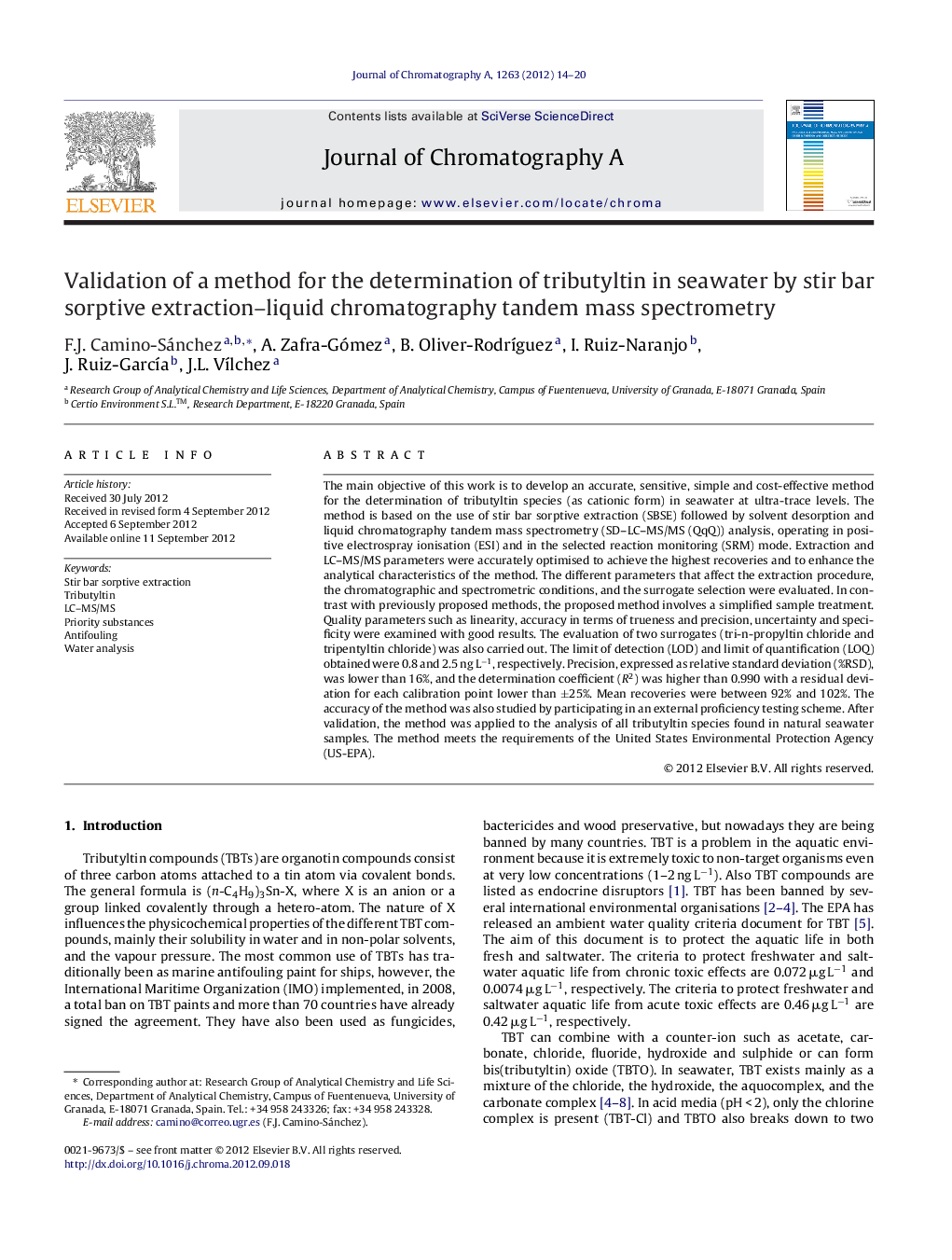| Article ID | Journal | Published Year | Pages | File Type |
|---|---|---|---|---|
| 1205259 | Journal of Chromatography A | 2012 | 7 Pages |
The main objective of this work is to develop an accurate, sensitive, simple and cost-effective method for the determination of tributyltin species (as cationic form) in seawater at ultra-trace levels. The method is based on the use of stir bar sorptive extraction (SBSE) followed by solvent desorption and liquid chromatography tandem mass spectrometry (SD–LC–MS/MS (QqQ)) analysis, operating in positive electrospray ionisation (ESI) and in the selected reaction monitoring (SRM) mode. Extraction and LC–MS/MS parameters were accurately optimised to achieve the highest recoveries and to enhance the analytical characteristics of the method. The different parameters that affect the extraction procedure, the chromatographic and spectrometric conditions, and the surrogate selection were evaluated. In contrast with previously proposed methods, the proposed method involves a simplified sample treatment. Quality parameters such as linearity, accuracy in terms of trueness and precision, uncertainty and specificity were examined with good results. The evaluation of two surrogates (tri-n-propyltin chloride and tripentyltin chloride) was also carried out. The limit of detection (LOD) and limit of quantification (LOQ) obtained were 0.8 and 2.5 ng L−1, respectively. Precision, expressed as relative standard deviation (%RSD), was lower than 16%, and the determination coefficient (R2) was higher than 0.990 with a residual deviation for each calibration point lower than ±25%. Mean recoveries were between 92% and 102%. The accuracy of the method was also studied by participating in an external proficiency testing scheme. After validation, the method was applied to the analysis of all tributyltin species found in natural seawater samples. The method meets the requirements of the United States Environmental Protection Agency (US-EPA).
► Method to identify and quantify tributyltin (TBT) species in seawater. ► SBSE–LC–MS/MS analysis allows very low LOQs and LODs. ► Banned compounds by several international environmental organizations. ► Compliance with the requirements of different international organism. ► Validation of the method according to ISO 17025:2005.
